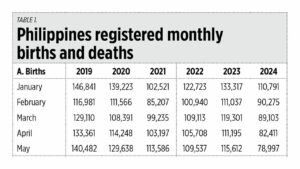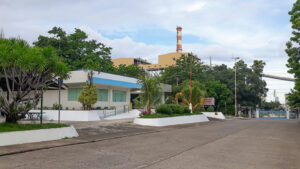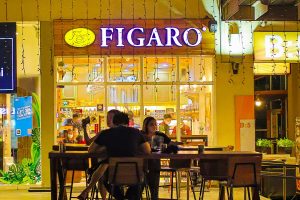Declining births and urbanized cities of the Philippines

On Jan. 31, the Philippine Statistics Authority (PSA) released the report, “Birth, Marriage, and Death Statistics for 2024 (Provisional, as of 30 November 2024).” I downloaded the Excel file for 2023-2024 and compared the monthly data of previous years, with 2019 serving as the baseline before the lockdowns of 2020 to mid-2022.
The number of births in the Philippines keeps declining. The monthly averages for January-May of each year declined, from 133,355 in 2019 to 100,749 in 2021 and 90,315 in 2024. This is not good. The average number of deaths per month see-sawed from 51,975 in 2019 to 63,643 in 2021, then 48,324 in 2024.
Despite the high number of reported COVID-19 cases in 2020 there were no “excess deaths” that year (an increase in the number of deaths from the previous year). It was in 2021, when COVID vaccination became mandatory, that “excess” deaths were high — there were nearly 880,000 deaths that year, or 259,400 more than in 2019 (see Table 1).
The net increase in population (births minus deaths) for the January-May period has been declining, from 81,380/month in 2019, to 37,100/month in 2021, and 41,990/month in 2024. That is not good. I have always suspected that those experimental vaccines which were made mandatory (otherwise people were not allowed to enter schools, offices, malls, etc.) have short- to long-term adverse effects on people’s health. So far this is slowly being confirmed via adverse demographic trends in the country.
ECONOMIC PERFORMANCE OF CITIESOn Feb. 7, the PSA released its report, “2023 Economic Performance of the Highly Urbanized Cities (HUC) in the Philippines.” It showed that Quezon City and Makati City are the only trillionaires, and that Davao City and Cebu City are the only non-Metro Manila cities in the top 10 wealthiest HUCs in the country.
In terms of annual growth, Puerto Princesa City in Palawan was highest with growth of 10.6% in 2023, followed by Iloilo and Bacolod cities with 10.5% and 10.0% growth respectively. I heard that the city government of Puerto Princesa was bragging about its performance — and rightly so. But I also wanted to see just how big or how small the real production in the city is.
So, I checked the PSA’s attached Excel files by region, and I compared the provincial product accounts and HUC accounts of regions in Mimaropa (Mindoro, Marinduque, Romblon, Palawan), Visayas, and Mindanao. It is not a good idea to compare them (except Davao and Cebu) with the HUCs in Metro Manila, Region 3 (Central Luzon), and Region 4 (Calabarzon) which are huge and rich.
It turns out that among the HUCs in Mimaropa-Visayas-Mindanao, Puerto Princesa was the second smallest or second poorest in 2023 after Tacloban City (see Table 2).
The last time I went to Puerto Princesa City was in 2019. The tourist areas of the city are beautiful — the underground river, the white sand beaches, the small exotic islands, a zoo, a crocodile farm, and so on. But the city itself does not look “highly urbanized.”
For one thing, there are frequent blackouts so all the hotels and resorts, malls, and big restaurants have gensets. This immediately raises the cost of business. Thus, food prices, hotel rooms, and tours are not exactly cheap in Puerto Princessa. Tourist arrivals recovered to the 2019 level only in 2023.
Then, many roads are not well-paved. Many streets are dark at night — which is related to the insufficient power supply discussed above. Plus, there are many stray dogs on the road that contribute to more accidents.
Three, I read that the majority of households are not connected to a sewage system. That the water supply is intermittent during the dry or summer months. And that city’s health services are wanting, with patients and their companions having to start queuing as early as 4 a.m.
Four, flooding is frequent in many areas including the north national highway. There must be blocked waterways somewhere, while buildings were given construction permits despite the danger of flooding. There was heavy flooding again early this month, from Feb. 8-10.
I read that the political leadership of Puerto Princesa City has been controlled by one family for three decades. This is not good.
About the blackouts, Palawan does not have big power plants except the oil gensets of Napocor and some private companies.
Years ago, DMCI and other companies proposed putting up a coal plant in Palawan, but this was vehemently opposed by many environmentalists because coal is a fossil fuel. But the same environmentalists are silent about the fact that the diesel and bunker oil that run the big gensets are also fossil fuels.
And then there is the state of the Palawan Electric Cooperative (Paleco). Data from the Energy Regulatory Commission (ERC) showed that Paleco’s System Average Interruption Duration Index (SAIDI) in 2023 for scheduled maintenance shutdown was 1,337 minutes (equivalent to 22 hours) while for some private distribution utilities like Visayan Electric Co. (VECO) it was only 163 minutes (three hours). When it comes to power supply instabilities, Paleco’s SAIDI in 2023 was 3,154 minutes (53 hours) while that of VECO was only eight minutes.
The city and the provincial leadership must make drastic changes in their infrastructure, energy, and other sectoral reforms.
Bienvenido S. Oplas, Jr. is the president of Bienvenido S. Oplas, Jr. Research Consultancy Services, and Minimal Government Thinkers. He is an international fellow of the Tholos Foundation.




